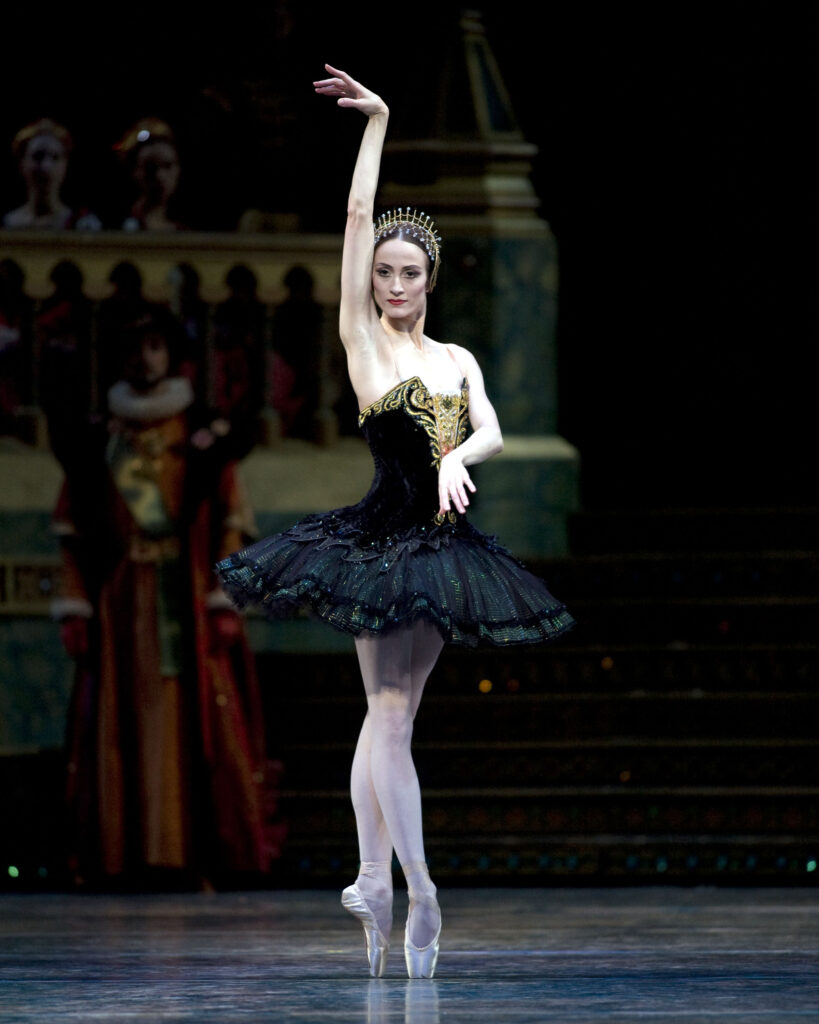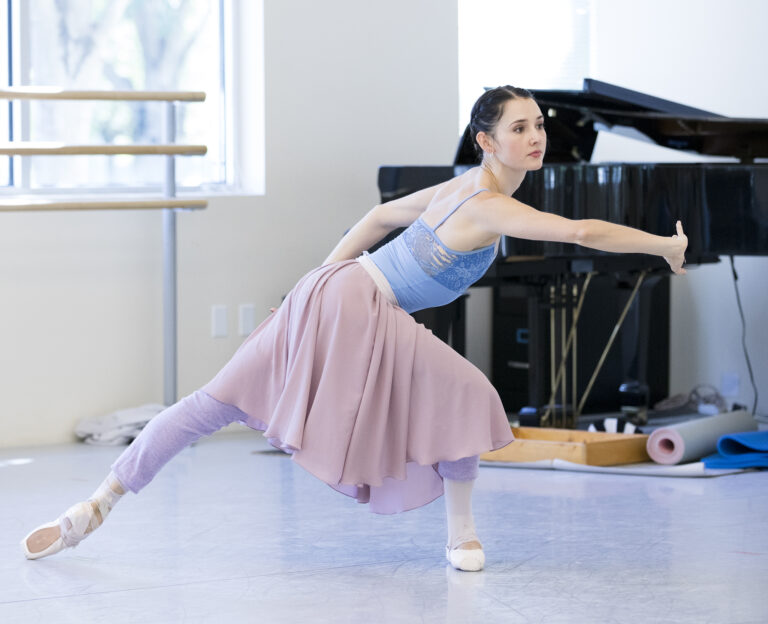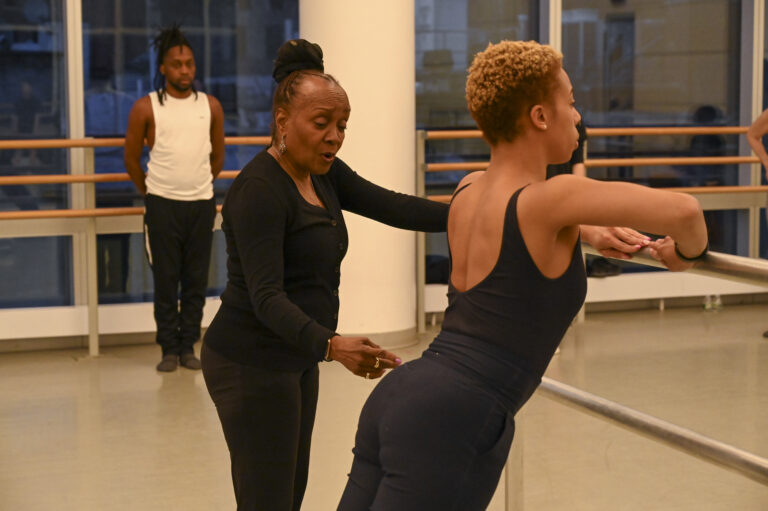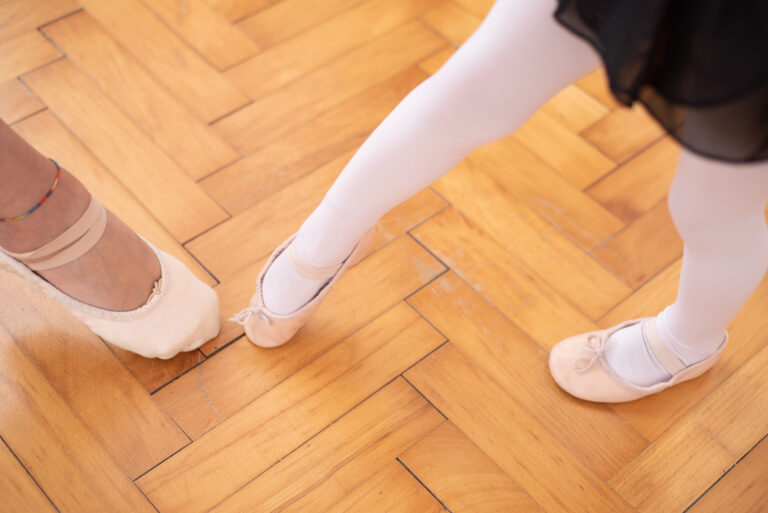
Susan Shields will never forget watching her dance idol, Christine Wright, perform the role of Pink Girl in Lar Lubovitch’s A Brahms Symphony. She’ll never forget stepping into that role herself and finding a way to make it her own. And she’ll never forget having a chance to coach a student in creating another interpretation of the Pink Girl.
“To watch her discover it is one of the delights of my life,” says Shields, former Lar Lubovitch Dance Company dancer and current director of George Mason University’s School of Dance. “That was a sublime moment.”
As an educator, you may be tasked with preparing a dancer to interpret an existing role. Whether you’re passing down a meaningful part or coaching dancers in a piece you never personally performed, it’s your job to help them navigate the inherent tension involved: striking just the right balance between staying true to the work and bringing themselves to it.

Establish Trust
As Shields learned when she took on the role of the Pink Girl, bringing yourself to the work requires vulnerability. “You need to be in a culture where you feel safe to be who you are,” she says. Students need to feel “safe enough to acknowledge their own pain, or their own despair, or their own joy.”
Experimenting with ways to make a role your own—emotionally, physically, musically—requires courage, confidence, and trust, says Julie Kent, former American Ballet Theatre principal dancer and current Houston Ballet co-artistic director. That begins with the environment you create in the studio and rehearsal process.
“What I encourage in dancers is not to feel like they will do something wrong, to be brave in the exploration process, because that’s where the real discoveries are made,” Kent says. “I focus a lot on taking risks, not being inhibited to try something, and then being open to the feedback.”

One way Ronni Favors cultivates that trust is by being forthcoming. “I honestly talk a lot about mistakes I’ve made, in order to create an environment in the room where it’s okay to make mistakes,” says Favors, former dancer with and now rehearsal director for Alvin Ailey American Dance Theater. “Keep encouraging questions and creating an atmosphere where it’s okay to fail, to not be sure.”
Share Information and Encourage Exploration
When she’s setting Alvin Ailey classics like Memoria or Cry, Favors likes to think of herself as a vessel. She offers her own stories and passes on as much information as she can from, she says, ‘the people on whose shoulders [I’m] standing.”
“Part of my mission is to not only share what I know but to encourage them to seek it out,” Favors adds. She urges her students to learn about the choreographer—including their training, influences, and the context in which they made a particular piece.
That curiosity and knowledge lays the groundwork for educated experimentation. “They can take that information and ingest it and interpret it in a way that makes physical and emotional sense to them. Then we can tweak and polish,” Favors says. “I want to empower them to find their voices.” Favors recalls Ailey saying, “Dancers, please do my choreography,” but he’d also say, “I like dancers who can color movement, who can bring themselves to the movement.”
According to Favors, dancers can play with how they carry their neck and upper body, how they use their eyes and focus, and how they use their breath. They can also make musical choices, like deciding whether to hit the top or back part of a beat, Shields adds, and bring emotional depth to their performance. “If you allow yourself to emotionally go there while you’re dancing it, it’s your own right there,” she says. Without altering the steps, “that automatically makes it different.”
Favors encourages dancers to create a kind of mood board, connecting insights about the choreographer and work with their own lived experiences. She recalls Ailey telling her early on to “get your heart broken, go out, make mistakes, meet people, do things, fall on your face, get back up.” Because, as he put it, “you cannot dance about dance, you have to dance about life.”

Kent feels similarly. “I want people to bring their characters to life from the inside out.” It’s how she found abandon when she took on the titular role in Manon, she remembers. And it’s how she coaches dancers to have a point of view, to be in touch with how they’re feeling, and to allow that to manifest in a physical way.
It might be worth reminding yourself and your dancers to relish the process. “That performance lasts for 15 minutes, 20 minutes, 30, an hour,” Kent says. “The actual work, the process, is the reward. So love it and enjoy it.”
Navigate the Journey Together
As the rehearsal director, répétiteur, or coach, you act as a guide, a sounding board, and a safeguard. That means being versatile, offering positive reinforcement, and helping dancers change course.
On one hand, you might need to let go. “It’s starting to respect them as a young artist,” says Shields, who recalls the moment she decided to stop talking and give her student some time, space, and privacy to make the Pink Girl her own.
On the other hand, you might need to step in and redirect dancers if you feel they’re headed in the wrong direction. “That’s the responsibility of the person in the front of the room,” Favors says. She taps into her memories and supplements her existing knowledge with insights from rehearsal footage to hone her instincts for what Ailey and other choreographers would—or wouldn’t—have liked. Sometimes she has to say, “That’s good, but that’s not Ailey.”

It goes back to the trust you’ve built with the dancers. “I don’t necessarily have all the answers, but I’m going to give you everything I know, and then we’re going to go on this journey together,” Favors admits. It’s “a huge responsibility and a huge privilege.”




